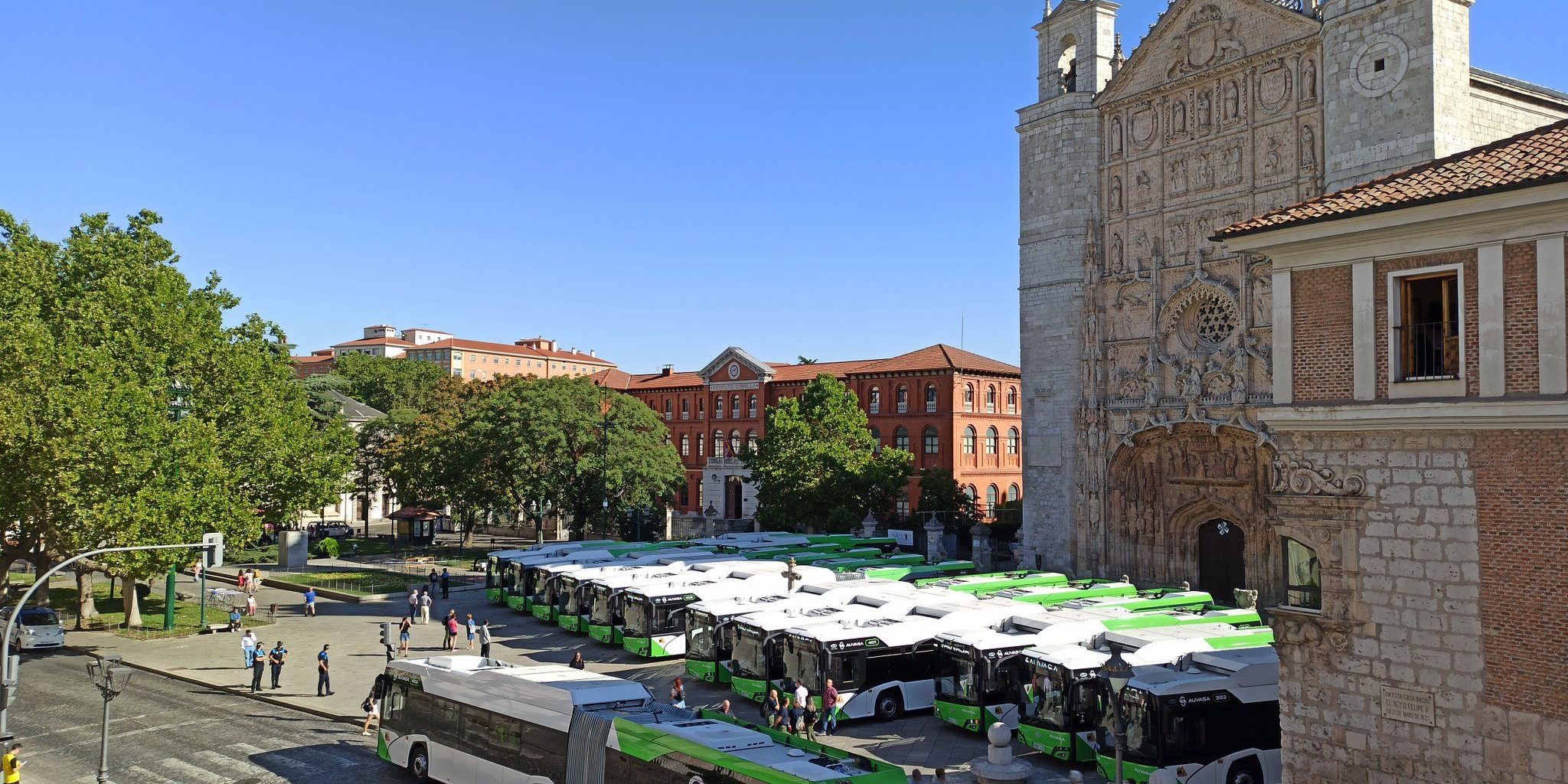Autobuses Urbanos de Valladolid, S.A. (AUVASA) presented 15 new natural gas buses, which will begin to circulate around the city this week. With the other 15 announced on May 10, within two months the AUVASA fleet added 30 new vehicles, all manufactured by Solaris. With these incorporations, the average age of the fleet will be reduced below 10 years.
The new fleet, which involved an investment of around 6.6 million euros, includes seven 12-meter rigid buses and eight 18-meter articulated buses. All of them are powered by CNG and have a 320 CV engine subject to Euro E emission regulations, which gives them a low level of polluting emissions and an ECO environmental label. The articulated vehicles will provide service on line 8, while the rigid ones will do so on the circular route and on the rest of the AUVASA lines.
The buses have double space for wheelchair users, automatic and manual double ramp, three doors (tilting/sliding), and the latest innovations in terms of technological features, such as the ECO Driver system to support economical driving, the visualization of the environment by the driver and the multimedia information systems for the passenger. The total capacity is 103 passengers in the case of the 12-meter rigid buses and 135 for the articulated ones.
The driving staff has a position with an ergonomic design that facilitates daily work, independent air conditioning and a protective screen.
The Valladolid City Council’s commitment to sustainable mobility is solid, and in initiatives like this it becomes clear how urban transport in the city is evolving and increasingly has the best means for citizens to be able to travel from a comfortable, safe and fast way, helping the city to become a benchmark for environmental sustainability every day.
On the 40th anniversary of AUVASA, a technological and avant-garde mobility revolution is taking place in Valladolid, and there is no doubt that the great renovation of the vehicle fleet is one of the most important aspects to face the new challenges in relation to with public transport and active mobility towards a new city model, more sustainable and innovative.
Source: AUVASA







